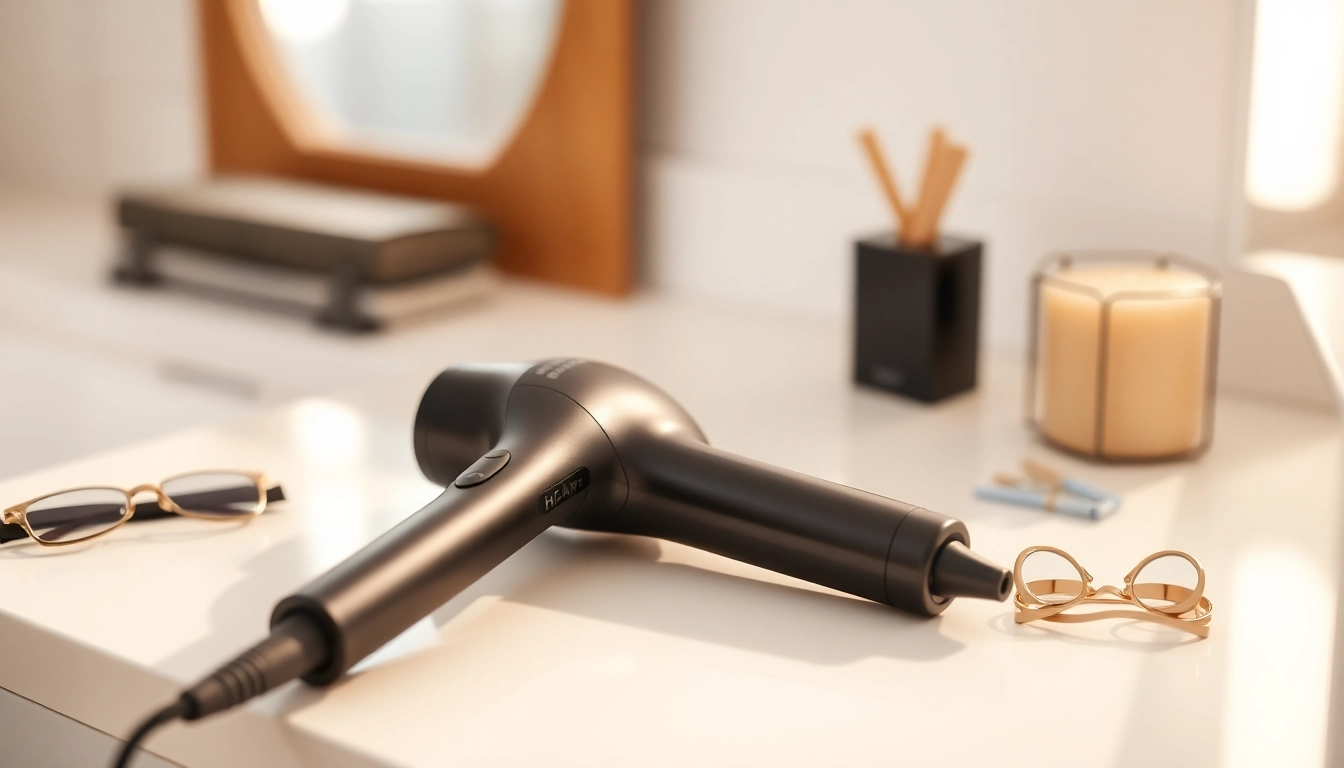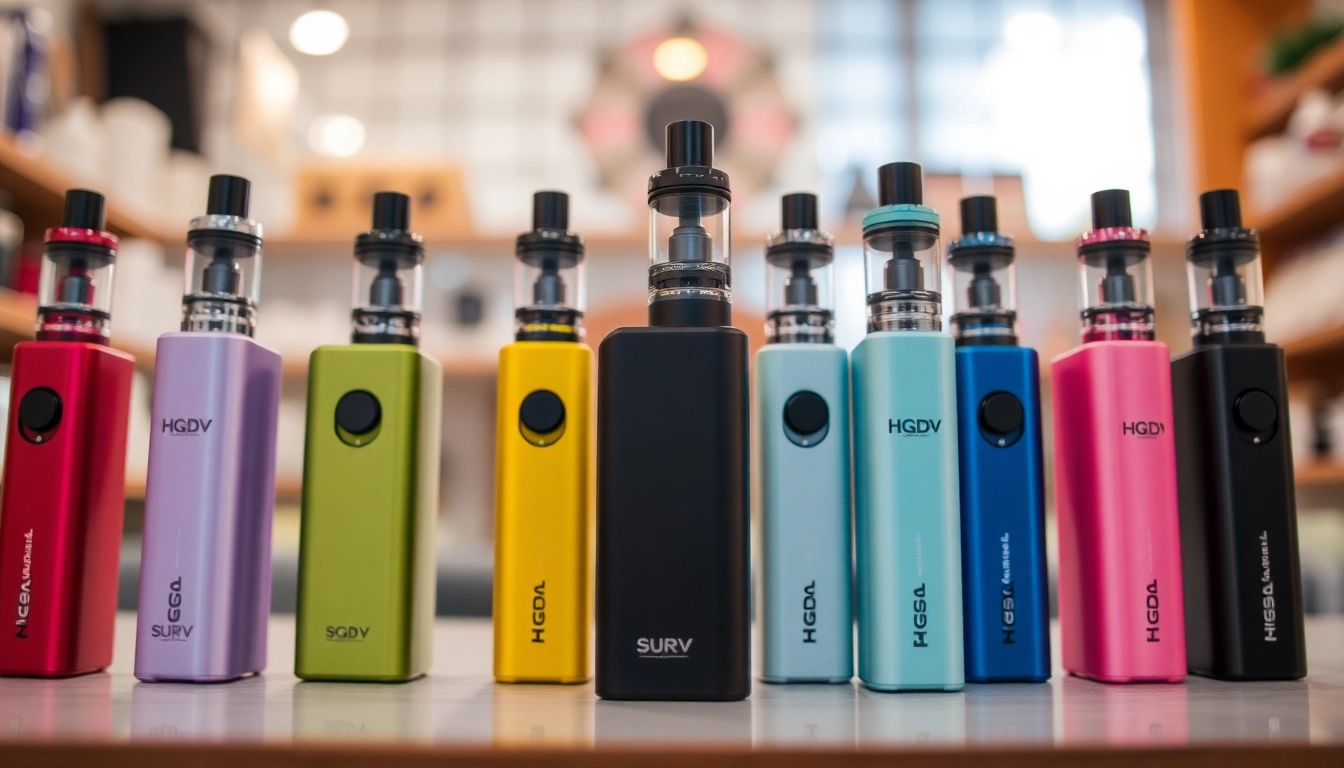Understanding Heat Tools for Hair
In the quest for fabulous hairstyles, heat tools for hair have become essential in the beauty arsenals of many. These devices, ranging from curling wands to flat irons, allow individuals to achieve salon-quality results in their own homes. The versatility and convenience they offer have made it important to not only understand how to use them but also to select the right products for your specific needs. As you navigate through various options, it’s crucial to consider factors such as hair type, heat settings, and safety measures to maximize styling benefits while minimizing damage.
What Are Heat Tools for Hair?
Heat tools for hair are devices specifically designed to alter the natural state of hair using heat. Commonly used types include:
- Hair Dryers: These are used to quickly dry hair while providing some level of styling.
- Flat Irons: Ideal for straightening curls or waves and achieving sleek looks.
- Curling Wands: These create curls or waves by wrapping hair around a heated barrel.
- Hair Straighteners: Similar to flat irons, but often have different plate materials and designs for varying results.
Each type of tool comes with its specific applications and results, making it beneficial for users to familiarize themselves with the various options available. If you’re interested in exploring the best choices on the market, check out this heat tools for hair selection that combines functionality and style.
Types of Heat Tools and Their Uses
Understanding the different types of heat tools is fundamental in selecting the right one for your hair needs:
1. Hair Dryers
Hair dryers use a fan to blow air through a heating element. They come with various settings for speed and temperature, making them versatile for different hair types and styles. Many models also include a diffuser for curly hair and a concentrator nozzle for straightening purposes.
2. Flat Irons
Flat irons are designed to straighten hair by clamping sections between two heated plates. While they are primarily used for straightening, they can also be utilized to create curls by adjusting the technique used during styling.
3. Curling Irons
Curling irons come with a barrel that varies in width, which allows users to create different types of curls. They usually require a bit of practice to master but offer diverse styling options once you get the hang of it.
4. Waving Irons
Waving irons are specifically designed to create deep waves or beachy curls. They feature three barrels and can be an excellent choice for adding volume and texture.
Safety Considerations When Using Heat Tools
While heat tools can transform your hairstyle, improper use can lead to significant damage. Here are safety tips you should always consider:
- Use Heat Protectants: A heat protectant spray or serum creates a barrier between your hair and the heat, helping to minimize damage.
- Choose the Right Temperature: Different hair types require different heat settings. Fine hair may need lower temperatures, while coarse hair can often handle higher heats.
- Monitor Usage Time: Prolonged contact with heat can lead to serious hair damage. Aim for the shortest effective time possible for styling.
- Never Use Wet Hair: Always ensure your hair is completely dry before using heat tools to avoid steam damage.
How to Choose the Right Heat Tool
Finding the right heat tool for your hair depends on multiple factors, from understanding your hair type to evaluating key features.
Identifying Your Hair Type
Your hair type significantly impacts the heat tools you should choose. There are several categories:
- Straight Hair: Generally, straight hair can handle higher temperatures, but using tools with adjustable settings is beneficial.
- Curly Hair: Look for tools that offer varied heat settings and a range of barrel sizes for tailored styling.
- Coarse and Thick Hair: Higher heat settings are typically required, making tools with specialized features essential.
- Fine Hair: It’s critical to use lower heat settings to prevent damage, so tools with temperature control are particularly advantageous.
Key Features to Look For
When selecting a heat tool, key features to consider include:
- Temperature Control: Look for adjustable heat settings for personalized styling based on hair type.
- Plate Material: Decide between materials like ceramic, titanium, or tourmaline, as these can influence heat distribution and hair health.
- Size and Weight: Consider the tool’s size and weight for ease of use—especially for tools that you may hold for extended periods.
- Auto Shut-Off: This safety feature ensures the device turns off after a certain period of inactivity, preventing accidents.
Reading Customer Reviews
Before making a purchase, reading customer reviews can provide valuable insights. Look for feedback on:
- Durability: Customers often share their experiences regarding how long the tool lasts.
- Ease of Use: Consider tools that are user-friendly, especially if you’re a beginner.
- Performance: Reviews typically highlight how well the tool performs concerning its intended purpose.
Best Practices When Using Heat Tools for Hair
Using heat tools correctly is crucial for achieving desired hairstyles without compromising hair health. Here are some best practices to follow:
Preparation Steps for Minimal Damage
Before engaging heat styling, proper preparation is essential:
- Wash and Condition: Clean hair is more receptive to styling products, and a good conditioner helps improve texture.
- Apply Heat Protectant: As mentioned earlier, a heat protectant is vital to shield your strands from potential damage.
- Section Your Hair: Working in sections helps ensure even styling and prevents overheating any portion.
Techniques for Effective Styling
Implementing the right techniques can greatly enhance your styling results:
- Flat Iron: For straightening, slowly glide the flat iron down sections of hair to avoid snagging.
- Curling Iron: Wrap sections of hair around the barrel for a few seconds to create defined curls, adjusting the hold time based on desired tightness.
- Hair Drying: Use the nozzle attachment to direct airflow for smoother finishes, and always point the dryer downwards to minimize frizz.
Post-Styling Hair Care
Taking care of your hair post-styling is essential for maintaining its health:
- Cool Down: Let your styled hair cool before touching it, as this sets the style in place.
- Use Serums: A lightweight serum can help tame frizz and add shine without weighing hair down.
- Avoid Over-Washing: Regular heat styling can lead to dryness; limiting washes can help preserve natural oils.
Innovative Features in Modern Heat Tools
The heat tools market continuously evolves, integrating innovative features that enhance user experience and hair health.
Smart Technology in Heat Styling Tools
Many modern heat tools come equipped with smart technology, allowing for:
- Customizable Heat Settings: Some models automatically adjust heat settings based on hair type.
- Multi-Functionality: Tools that can curl, wave, or straighten offer versatility for styling without needing multiple devices.
- Automated Features: Devices that turn off after a set period help to prevent overheating or accidents.
Benefits of Ceramic and Titanium Plates
Plate material is an important feature to consider for optimal hair styling:
- Ceramic: Known for distributing heat evenly, ceramic plates can help minimize hot spots that can damage hair.
- Titanium: These plates are sturdy and heat up quickly, providing effective styling for thick or coarse hair.
- Tourmaline: Often used in combination with ceramic or titanium, this mineral emits negative ions that can help combat frizz.
Eco-Friendly Heat Tool Options
In a world increasingly focused on sustainability, many consumers are seeking eco-friendly heat tools. Options include:
- Energy-Efficient Models: Tools designed to minimize energy consumption while delivering optimal results.
- Ethically Sourced Materials: Some brands are emerging with products that prioritize sustainable materials and manufacturing processes.
- Recyclable Packaging: Consider brands that use eco-friendly packaging to reduce environmental impact.
Maintaining and Storing Your Heat Tools
Once you purchase heat tools, maintaining them properly ensures longer life and optimal performance.
Cleaning Tips for Longevity
Keeping your tools clean is essential to maintain performance:
- Unplug and Cool: Always unplug the device and let it cool before cleaning.
- Wipe Plates Regularly: Use a damp cloth to wipe any residue off the plates to prevent buildup.
- Deep Clean Occasionally: For stubborn product buildup, a specialized cleaning solution can help restore the tool’s effectiveness.
Safe Storage Methods
Proper storage of your heat tools prevents damage and ensures safety:
- Use Heat-Proof Cases: Investing in heat-proof storage can protect surfaces and tools alike.
- Avoid Tangles: Store cords loosely to prevent tangling, which can cause wear over time.
- Keep Away from Moisture: Store your tools in a dry place to prevent damage from humidity.
When to Replace Your Heat Tools
Understanding when to replace your heat tools is important for hair health:
- Persistent Damage: If your tool consistently causes damage despite following care guidelines, it may be time for a replacement.
- Temperature Control Issues: Devices that no longer maintain consistent heat can lead to poor styling results and hair damage.
- Physical Damage: Cracks, frayed cords, or overheating are signs that a tool needs to be retired.



